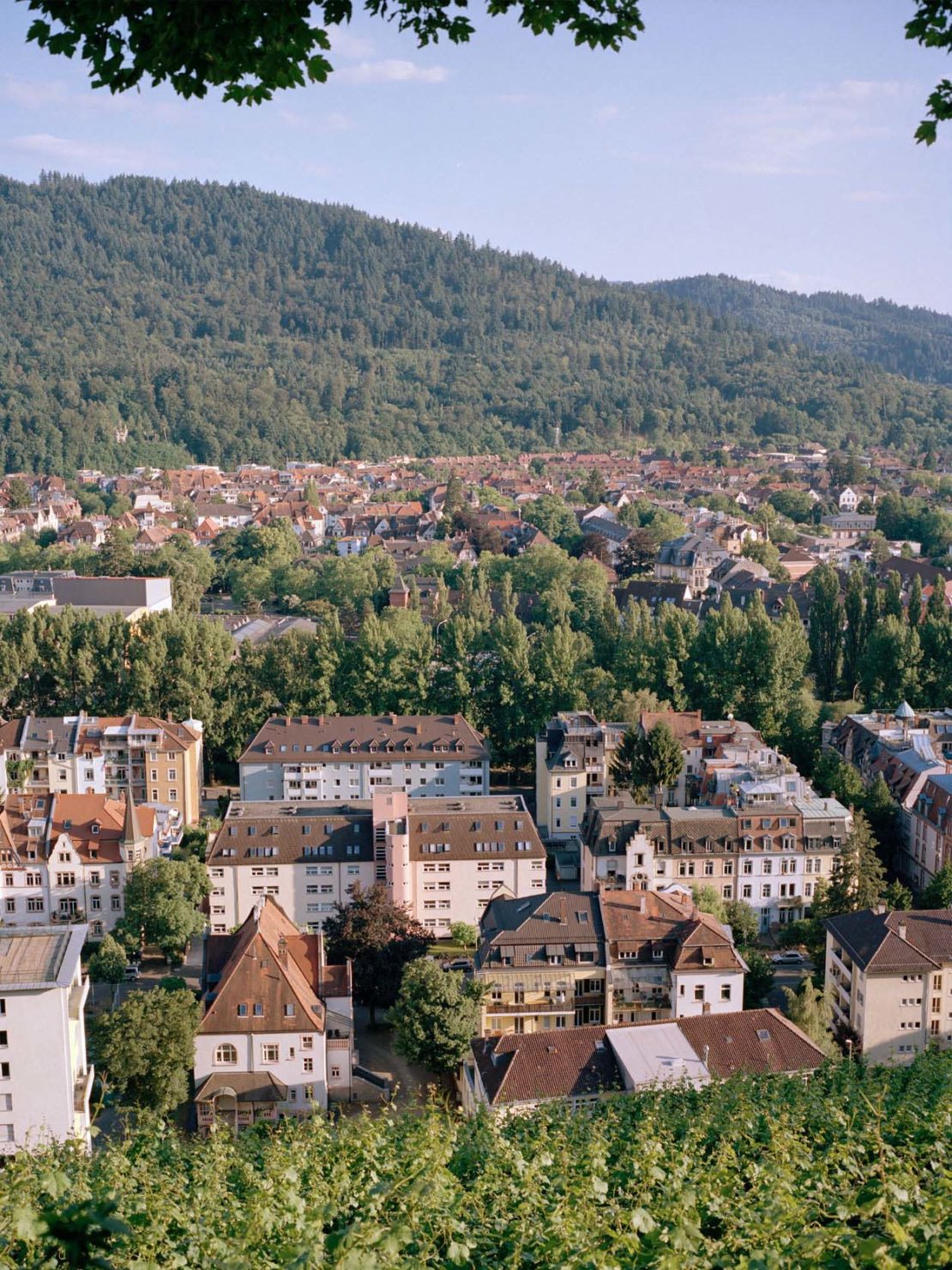
In search of the renewable city
As he drags open a heavy green door, Luciano Ibarra says, “This is where we keep our vegetables.” He is showing me around GartenCoop, an organic farm he co-founded in Vauban, the most eco-friendly district of one of Europe’s greenest cities: Freiburg. Behind the door lie lurid plastic crates filled with the oddest shaped parsnips and green vegetables.
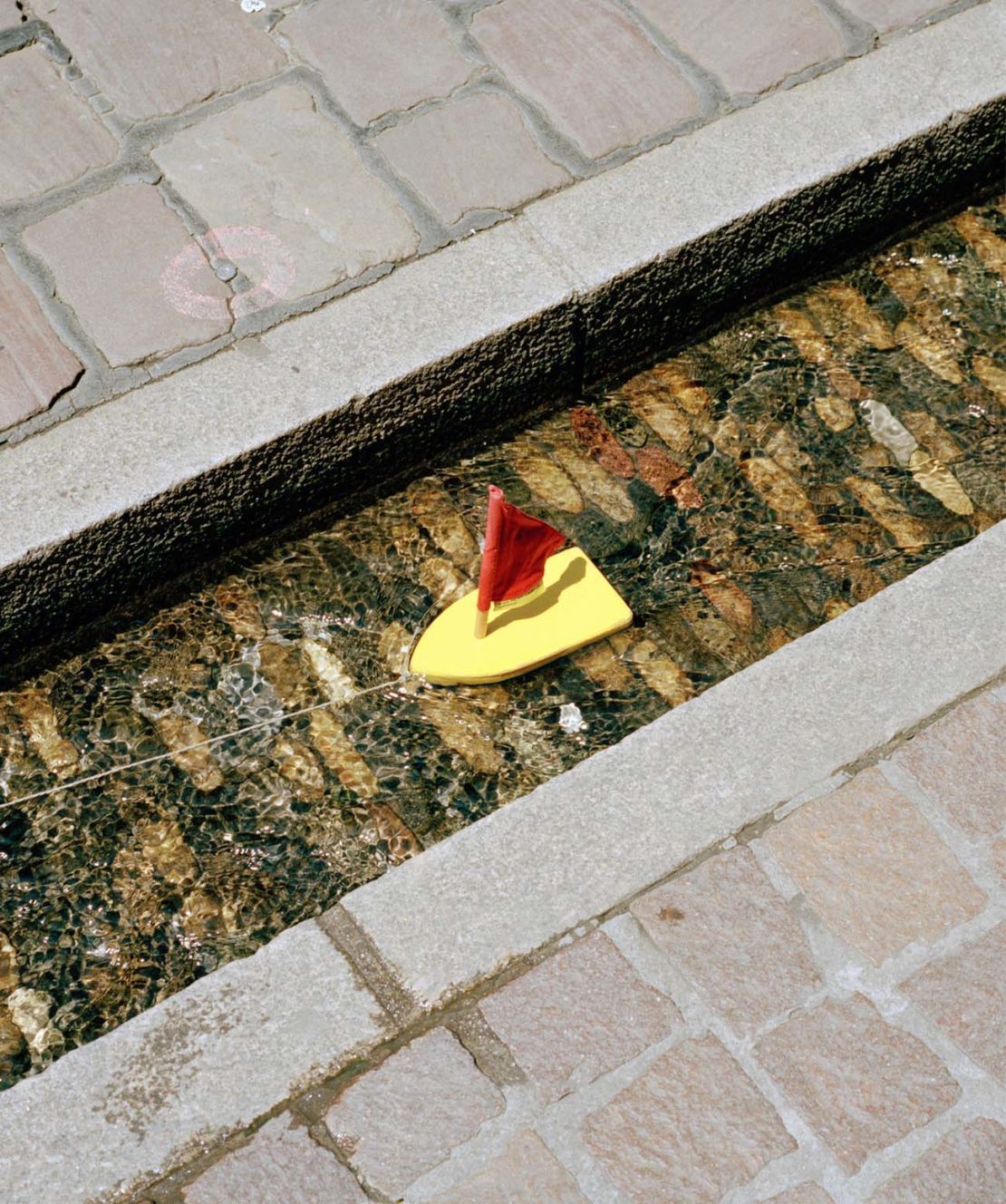
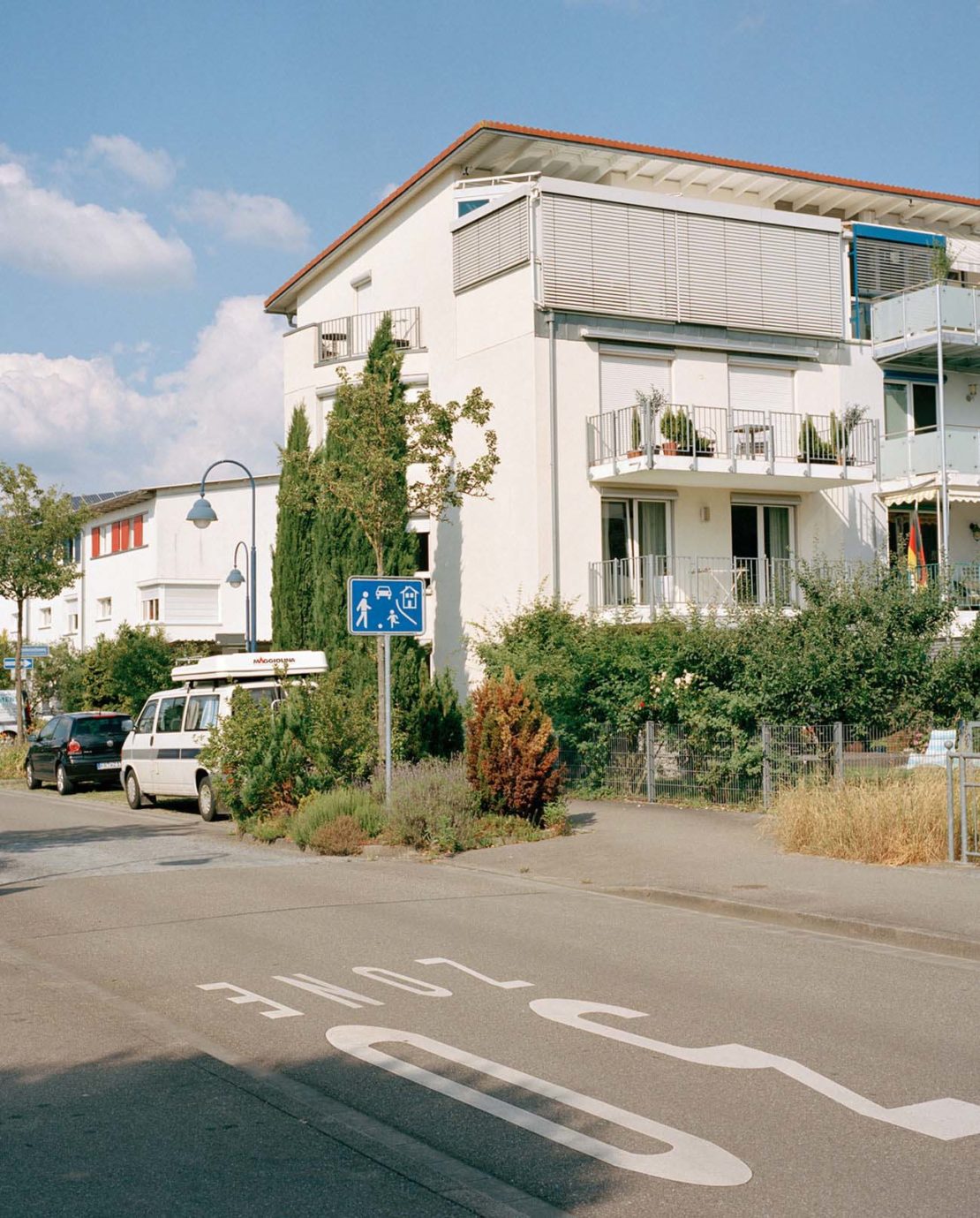
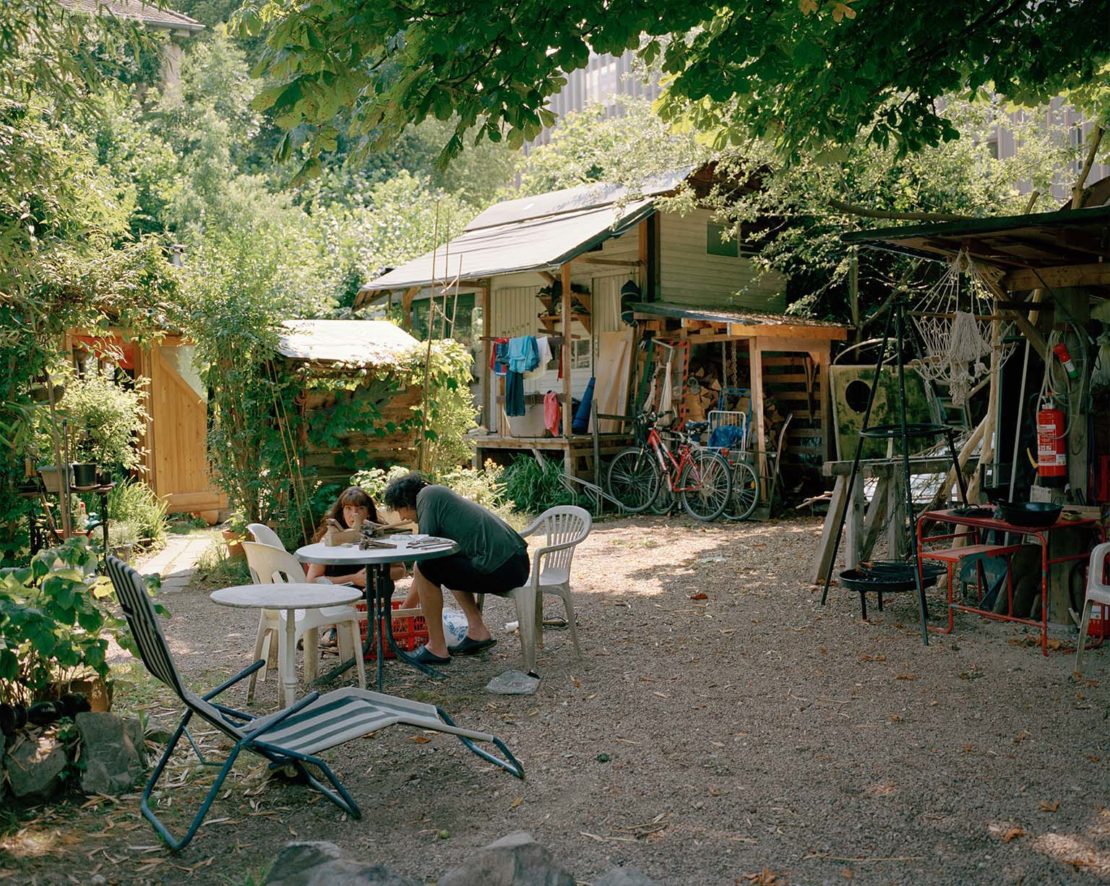
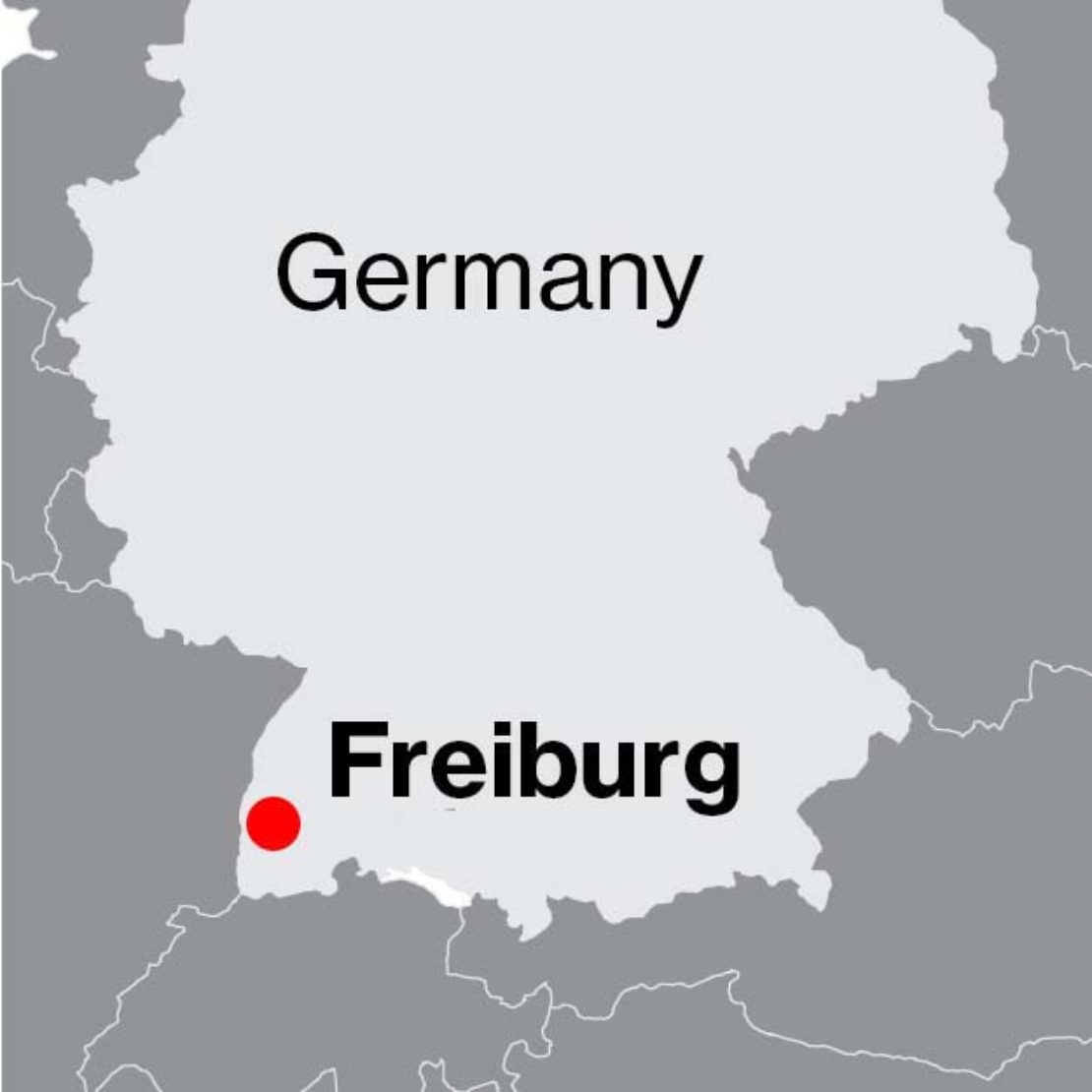
Last year, Ibarra made a documentary called The Strategy of Crooked Cucumbers about co-operative farms in the southern German city. "Oh, you know about that!” he laughs, as we head into the Selbstorganisierte Unabhängige Siedlungs-Initiative (SUSI) commune buildings – repurposed from army barracks. People join the co-op and pay as much (or as little) as they can for wholesome produce. “We provide food for 290 people,” he says.
Ibarra, Chilean-born but raised in Luxembourg, studied agricultural sciences before getting involved in all manner of projects in Freiburg – co-operative farms, community organising, filmmaking, journalism. The 42-year-old, passionate about the politics of life, took his cues from similarly aligned alternative, green-leaning worldviews from elsewhere. “I was inspired by the UK anti-roads movement of the 1990s,” he says, “by Reclaim the Streets and guerrilla gardeners.”
Vauban, a planned district on the southern outskirts of Freiburg, was formulated in the mid-90s and completed over the last decade. It is a vision of the city’s green future. Freiburg itself is also an interesting summation of what we thought that future might look like at various points in the past. Perhaps aptly for a city that is loath to waste anything, it encompasses urban and environmental thinking that has been swirling around for decades.
Freiburg’s feel most obviously evokes the garden city movement that Sir Ebenezer Howard developed in England at the turn of the 20th century, which resulted in Letchworth, Hertfordshire, the world’s first garden city, visited by a besotted Lenin in 1907. The other philosophy underpinning Freiburg is the modern green movement, which evolved from German leftist politics in the mid-70s. It embraced students – and in Freiburg there are thousands of those at the 550-year-old Albert Ludwigs University – and the urban anti-state, anti-capitalist communes.
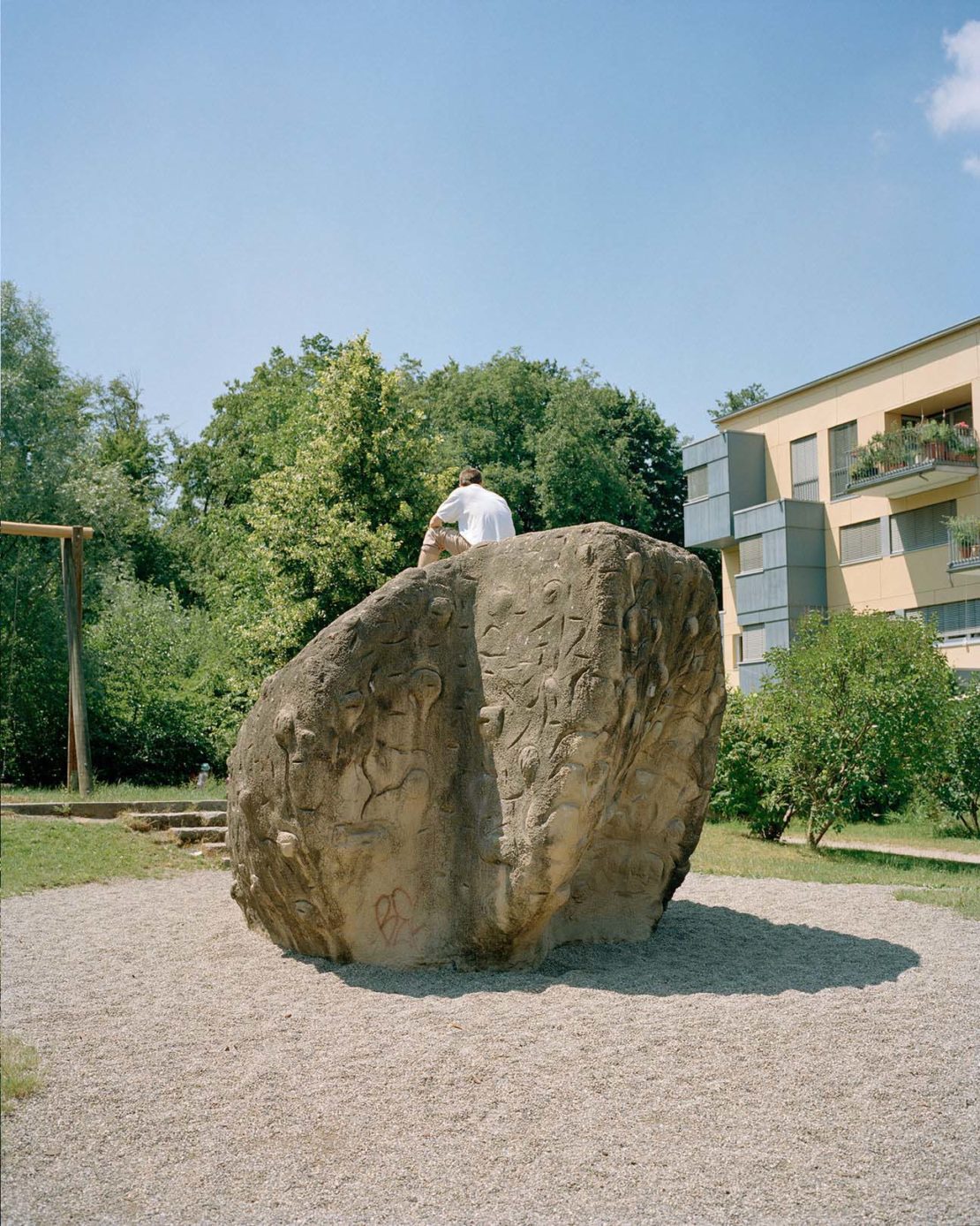
These ideals – creating a liveable city that felt more like the country and protecting the earth (with a bit of turning on, tuning in and dropping out thrown in for good measure) – were mixed in a test tube, with the willing participation of Freiburg’s planners, architects, academics, students and general inhabitants. Vauban is one of the more far-reaching results: a family-friendly suburb situated on a former French barracks. Since the French army packed up their Cognac and Camembert and left 22 years ago, having arrived victorious at the end of World War II, a transformation has occurred. Vauban – or Freiburg, for that matter – might not have quite the tourist pull of Berlin and other German cities; but some are starting to visit and, last year, the neighbourhood’s first hotel opened. Predictably, it’s green.
“For us, ecology and innovation are absolutely essential to architecture today,” says Katrin Voermanek of the Green City Hotel’s architects Barkow Leibinger. “The challenge for architects is to combine the latest technologies and maximum user comfort with good design.” I wouldn't say the hotel, with its uncompromising of minimal designs, is the most comfortable I've stayed in; but the timber, green paint and spartan spaces are certainly distinctive.
Barkow Leibinger also built the Stadthaus M1 flats next door, and Voermanek explains what makes both buildings so ecologically sound: “The window frames are constructed in Oregon pine combined with passive house standard glazing in the apartments and acoustic glazing in the hotel [passive houses generate more energy than they use].” I look out of the window at the Number 3 tram quietly rolling back towards Freiburg’s chocolate-box city centre. Voermanek continues: “Since the hotel is situated in a very busy street, additional noise protection was necessary.”
There’s a clear intention to show Freiburg off to people from around the world, especially journalists and politicians. “Many people from abroad come to Freiburg, bring their knowledge and views, and take home inspiration,” says Astrid Mayer of Freiburg Future Lab, an organisation aiming to get people collaborating and sharing knowledge about improving cities. “We put together people and let them communicate about sustainability issues.” Mayer lists the city's current projects: “Putting up more windmills, building better cycle paths, renovating buildings to reduce their energy consumption, better dialogue with the citizens, a zero-emission industrial zone, autonomy from fossil energies by 2050. But,” she laughs, “there is still much to be done!”
I tour Vauban, with Luciano Ibarra as my guide. In every direction there are neatly swept streets, rows of trees, not many cars and buildings whose regular angles are unmistakably Teutonic – well-behaved and crisply designed. But it’s not all so simple and harmonious: if you thought the aforementioned Green City Hotel – which employs a high number of disabled staff and sticks firmly to a green way forward – was universally welcomed, you’d be wrong. Ibarra points upwards and I notice where red paint bombs have splattered against the hotel. Many locals opposed its building, on a site which used to be a squat called the Rhino. “It took 1,000 police to evict everyone,” Ibarra says, showing me a discreet memorial. Many locals wanted a park built on the site, not a hotel. It was one of the last squatted parts of Vauban until the eviction in 2011.
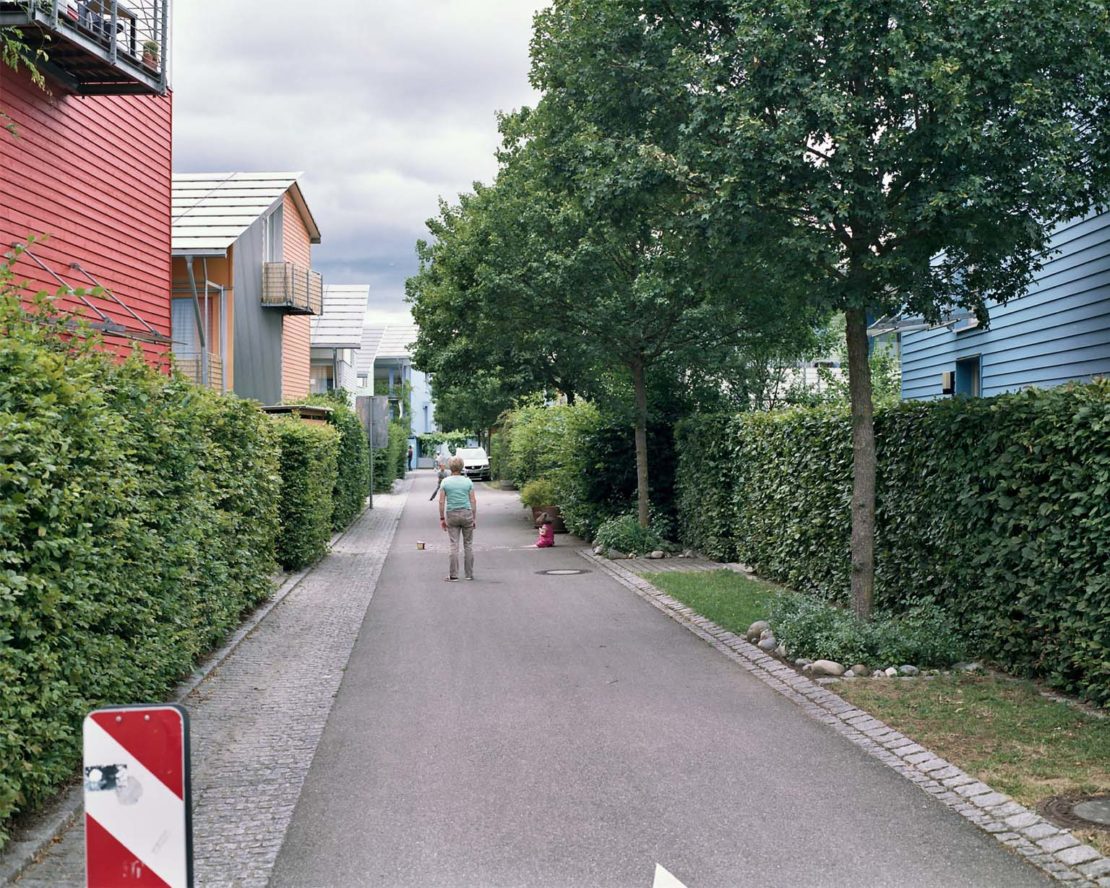
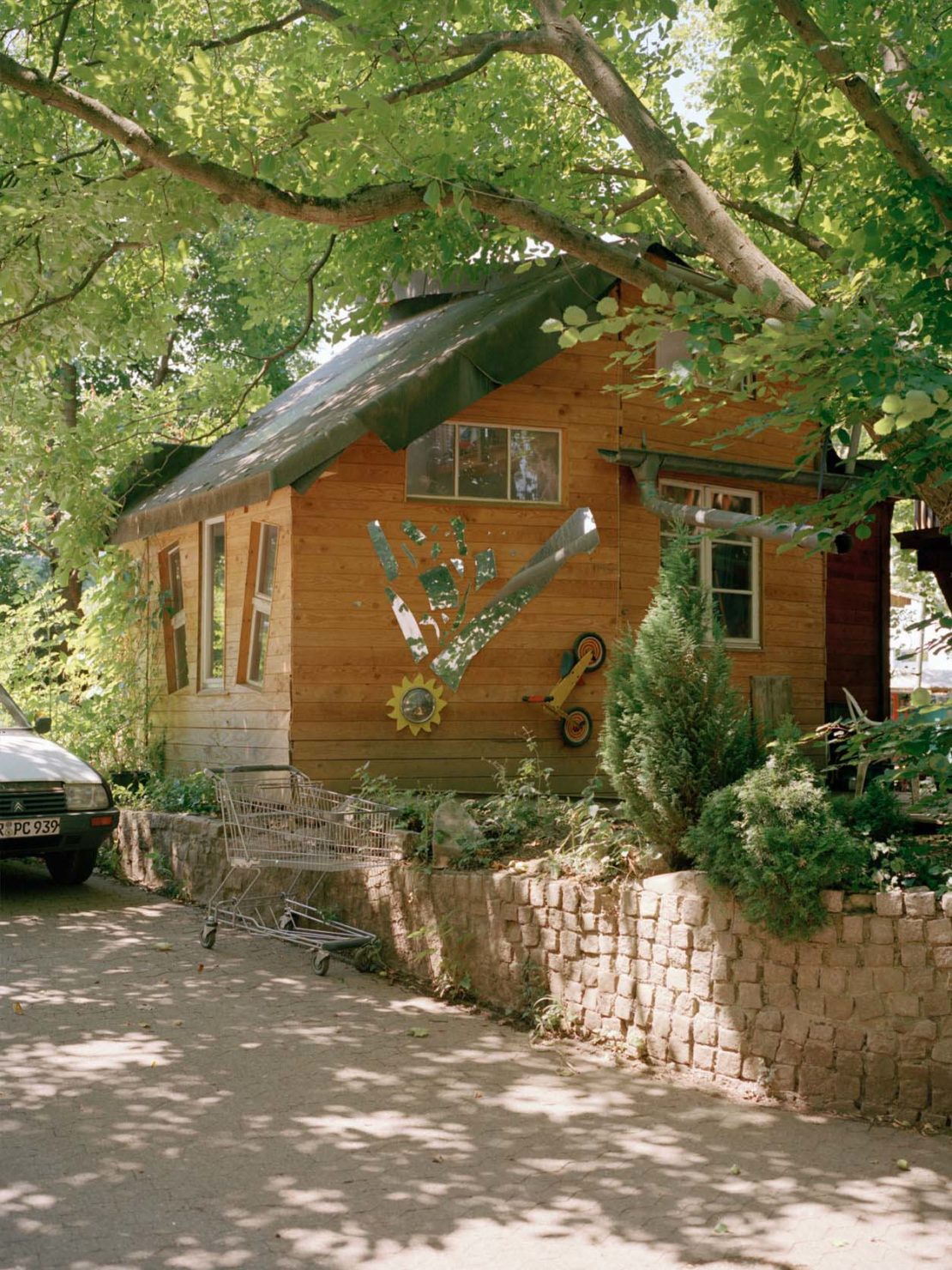
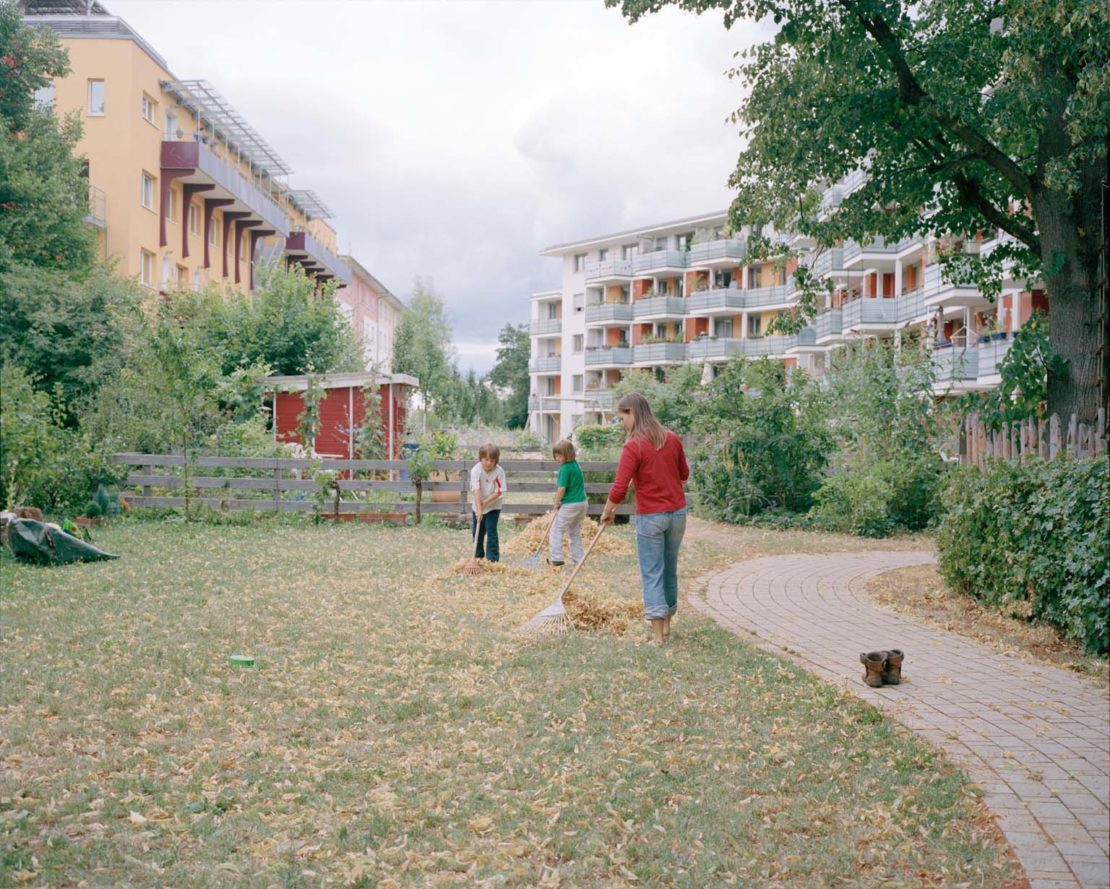
Vauban
The home-made houses round the corner look like Christiania in Copenhagen, another experiment in communal living on a former military base. But Vauban is more chi-chi, the residents mostly middle class. Community building groups are allowed to develop the apartment blocks they want and the result is a stylistic smorgasbord. The baugruppen, Ibarra explains, are groups who build these blocks together, sharing insights and cost. Forum Vauban is the non-profit steering group overseeing the district, a community of planners making what they want, not enduring what the city planners dictate from above. “Bottom-up planning – the whole idea came from the inhabitants,” says Ibarra.
He is greeted regularly as we wander; everyone’s talking to each other. There is a genuine community feeling both in Vauban, with its 5,000 inhabitants, and in the wider Freiburg of 230,000 people. There are few cars but this is, Ibarra explains, “the city of short distances – it's easy to walk or cycle, you're not more than 500 metres from a tram stop and a huge amount of people registered here have BahnCards to get discounted train travel. You leave your car on the outskirts in parking garages – but cars aren't taboo, you can bring stuff in. I use a shared car if I want to go to IKEA.”
There are also parks for kids to play in, linear ones which run between housing blocks and out to the fields on the very edge of the city where the hills begin to rise. “It feels rural doesn’t, it?” says Ibarra.
Ibarra sings the praises of passive houses. The best of these are the Klee Hausbau company’s eco-friendly houses, some of the most energy efficient on earth. They are clean, modern and attractive, and use very little energy to heat rooms and water. Heat-exchange systems ensure fresh air comes in preheated and you don’t have to open the windows. I ask if tenants pay very little for energy. “They sell it back to the grid,” Ibarra says. The houses cost 10 per cent more to build but use 90 per cent less energy. Bills can be as low as €50 per year.
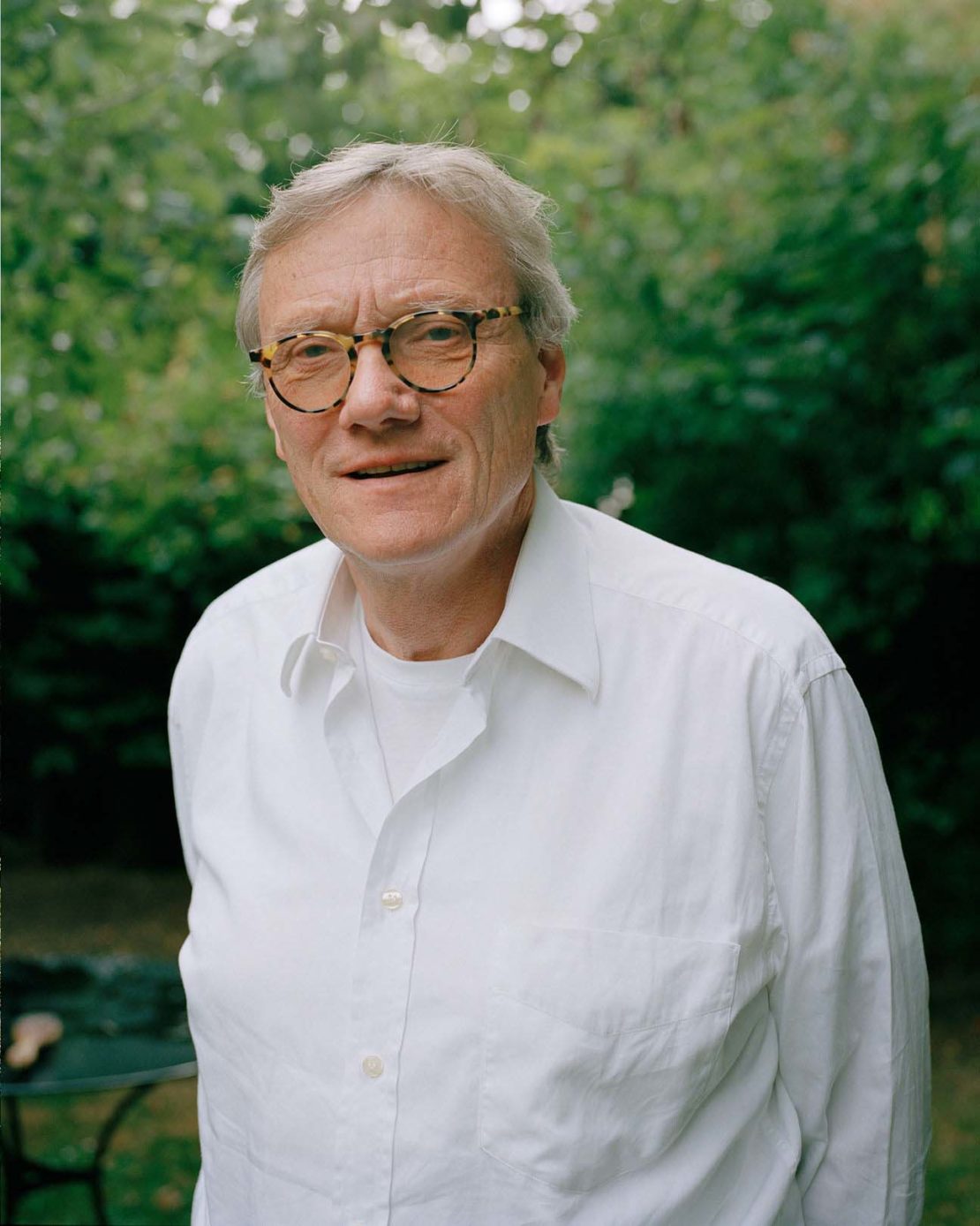
It might all look calm in 2014 but Freiburg’s transformation from sleepy Black Forest backwater to innovation hub was a fiery affair cast in conflict. Strident opposition to the nuclear power plant planned nearby at Wyhl galvanised the mood of the city.
“The government in Bonn decided to build 17 new nuclear power stations to get independence from oil during the 1970s Oil Crisis,” explains Wulf Daseking, chief planner of Freiburg from 1984-2010 and now professor at Freiburg University and UCL’s Bartlett School of Architecture. Daseking questioned that pro-nuclear rationale and went on to develop the ideas and policies behind the creation of eco-cities that would shape Freiburg in the decades that followed.
“One of those 17 plants was to be built very close,” says Daseking. “Neither the farmers nor the Freiburg people wanted it and both groups came together and fought against it. The Green Party was born here. Originally only a small group in Freiburg fought for their idea to get away from oil and atomics and tried to drive Freiburg towards using solar energy.” Locals used the slogan“Atomkraft? Nein Danke” (Atomic power? No thanks!). They gathered at Wyhl in February 1975 and their violent treatment by state police made the national TV news. By March, the battle was won: the courts revoked the licence to build the nuclear power station. Freiburg’s energiewende (energy transition) could begin in earnest.
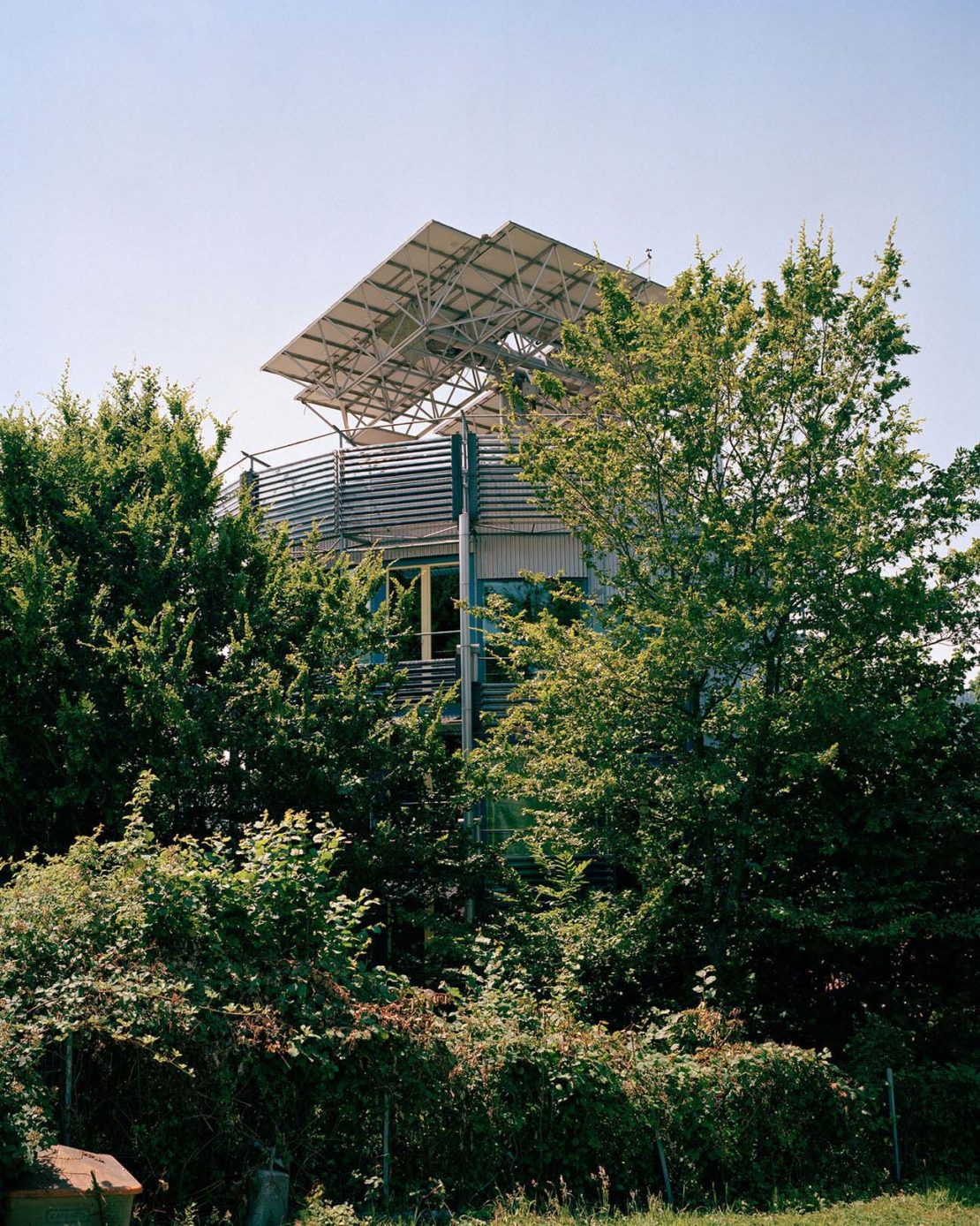
The governor of Freiburg’s state Baden Wurttemberg at that time was right-winger Günther Oettinger. Other, more radical groups in Germany like the Red Army Faction – the Baader-Meinhof group – were intent on waging war on what they saw as a ‘residual Nazism’ in German high office. Many Germans believed it was their duty to act to prevent future authoritarianism. Also among the protesters in the 70s were ordinary Freiburgers, even then demonstrating an interest in greenness. One was Rolf Disch, who went on to become an architect and solar power pioneer. “He drove a solar-powered car!” says Ibarra. In 1994, Disch built himself an amazing hi-tech house on the hill overlooking Vauban, where still lives. It’s the shape of a giant bin, poised on a big stalk. There’s a huge solar panel on the roof and the entire building spins to follow the sun. It looks like a satellite fallen from space.
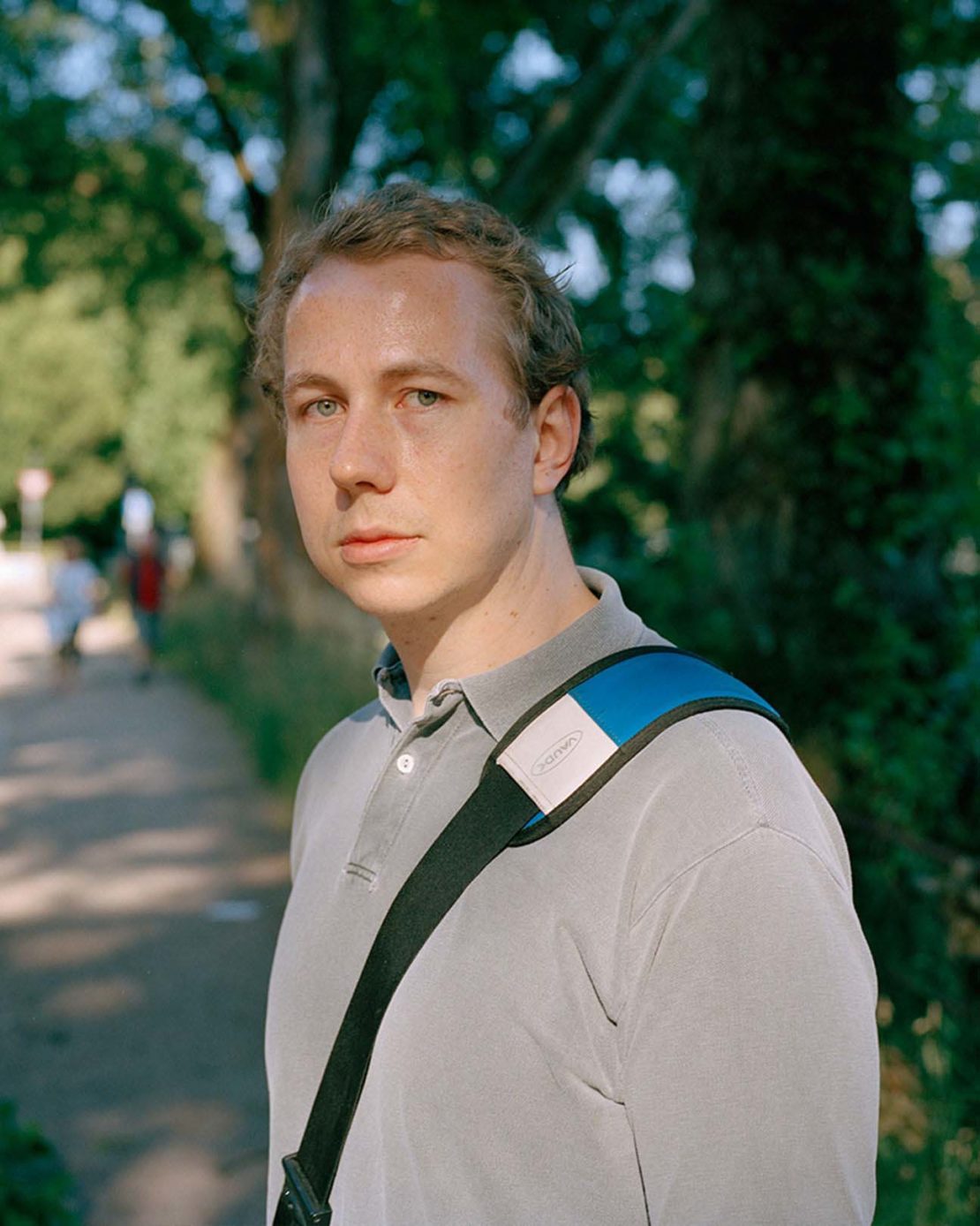
Rieselfeld is another fascinating ‘new’ district in Freiburg. A former sewage farm, it first housed minority groups of Travellers – the often persecuted Jenische and Sinti. Now it contains blocks of mostly social housing. It’s anchored by the fine modern and uncompromising Maria-Magdalena Church, which houses two churches – one Protestant, one Catholic. The doppelkirche’s concrete bulk is impressive and well-used: on a sunny Sunday, I mingle with a huge, happy congregation of Catholics, including many West African immigrants. The neo-brutalist, ramrod concrete lines which ape the most exciting modern architecture of the 70s, are the work of Susanne Gross. I ask whether Freiburg's sense of innovation affected her remarkable design? “It did indeed. My eagerness to innovate also lay with the readiness of the congregations [to accept it].”
To an outsider, such approaches to new ideas and problem solving seem impressive. But does it resonate with Freiburg’s natives? “Maybe I’ve been living here for too long to see it anymore, but Freiburg to me is a very comfortable town that prides itself tradition,” says Martin Jost, a local journalist. “Curiously, I don’t feel that I live in a particularly innovative city. Maybe there’s a numbness to innovation that comes with living at the centre of it; maybe Freiburg’s image is just an act?”
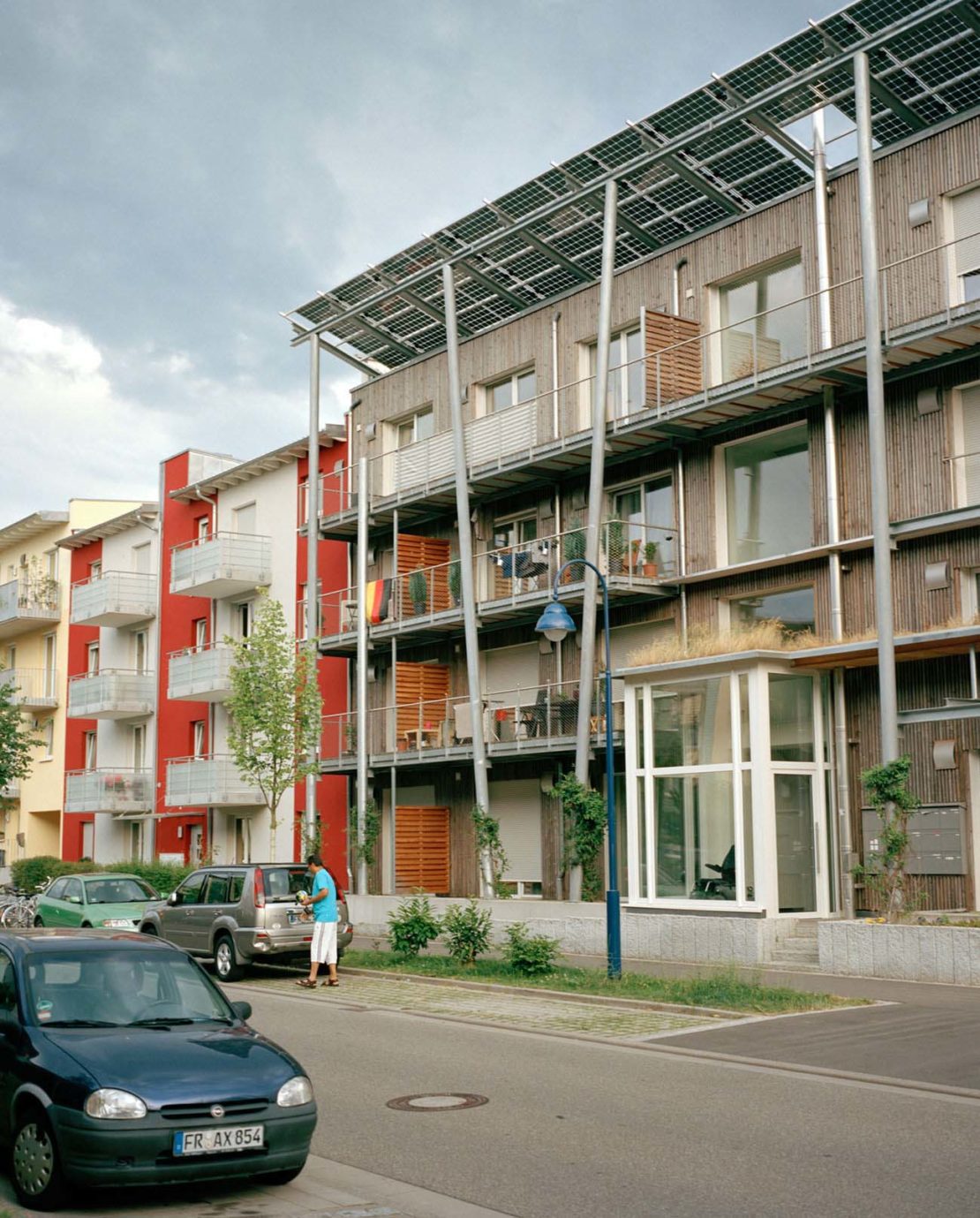
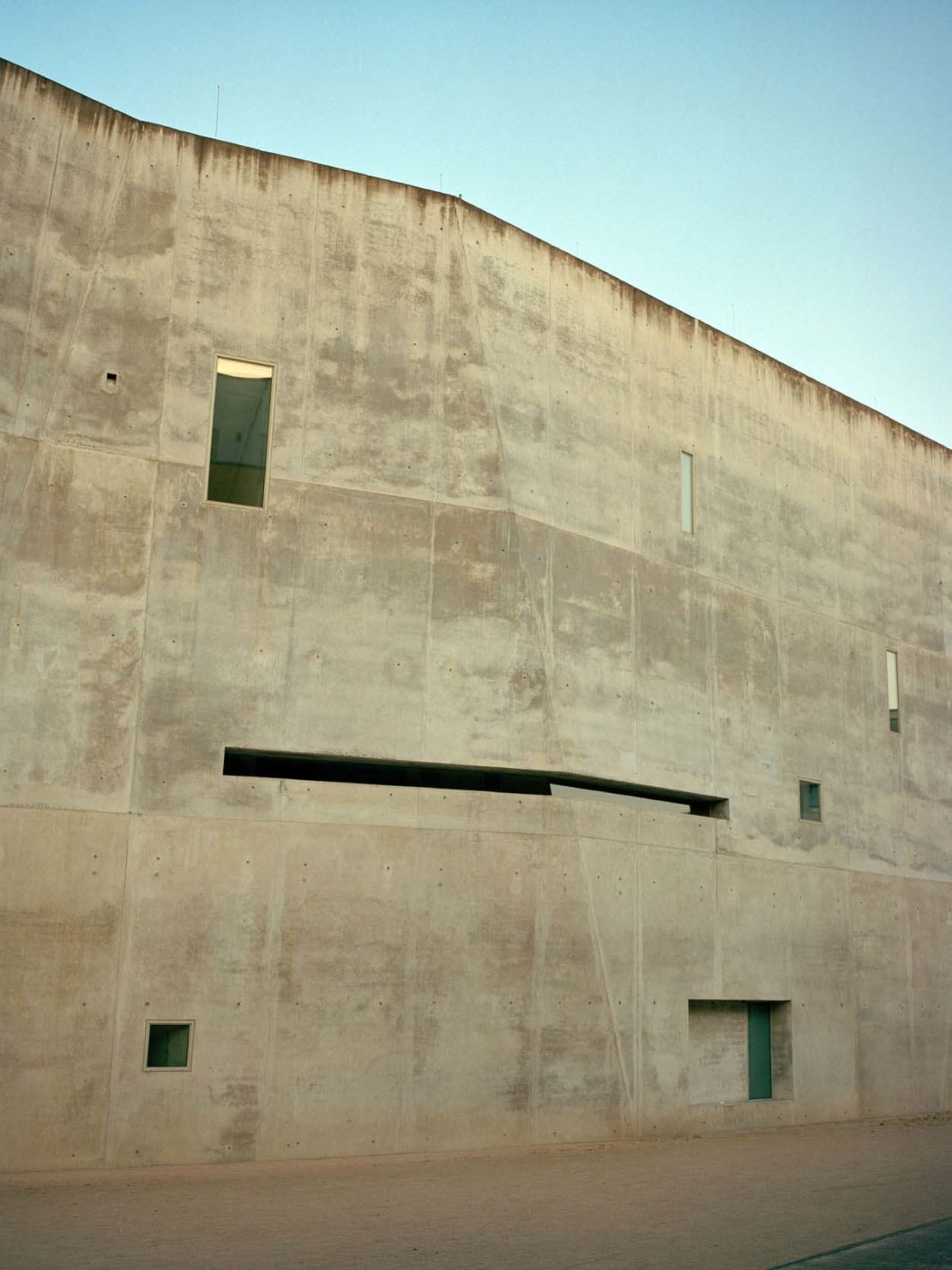
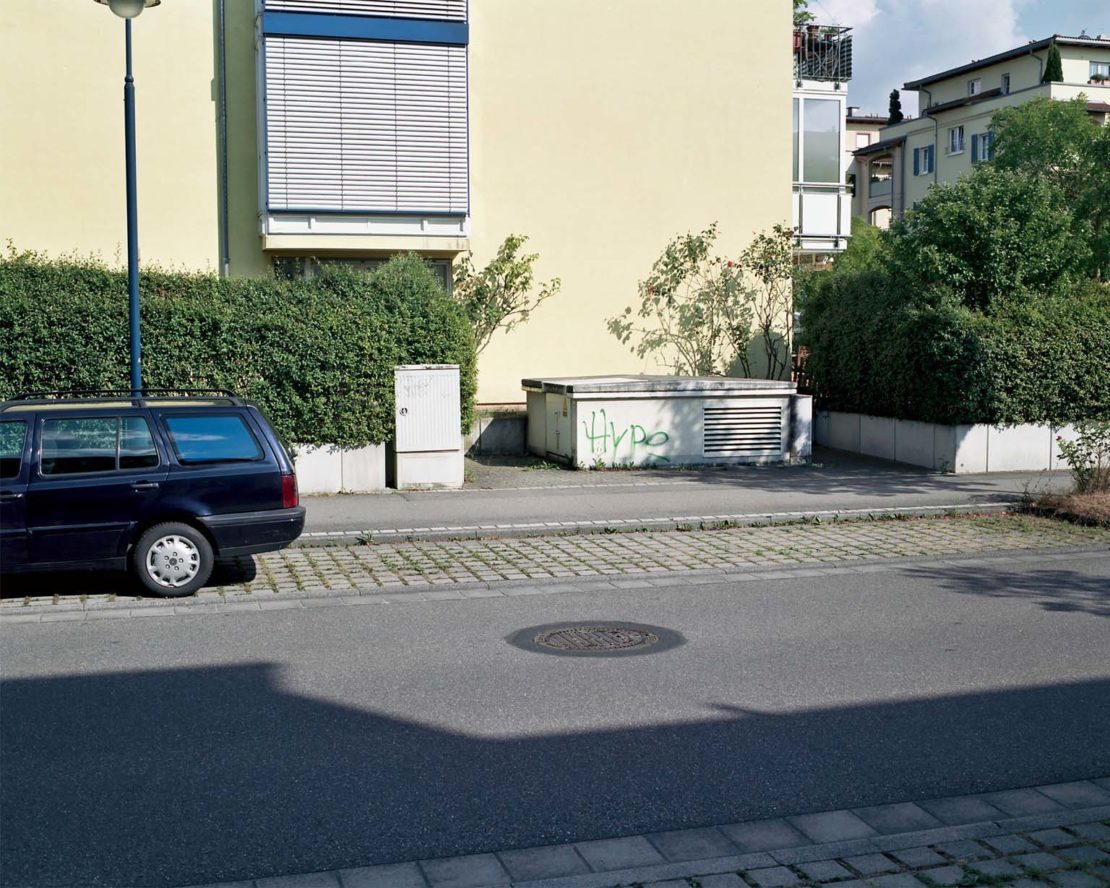
Rieselfeld
When I ask him what he does find innovative here his answer surprises me: “Football. I’m not at all knowledgeable about football but SC Freiburg’s innovative youth program is highly regarded.” Intelligent tactical analysis following training sessions and a medical and psychological care programme underpin the way in which the club here looks after its young players.
I stop by the team’s 24,000 capacity Solar Stadion, whose entire power is drawn from the sun. The roof of every stand is a sea of silver panels glinting in the sunlight. There, I try to buy a ticket for the day’s Bundesliga match: Freiburg v Schalke. It’s sold out. I find out in a bar in the old town later that little Freiburg lost to Champions League side Schalke 2-0. Football here is a classy affair: Freiburg’s philosopher-coach Christian Streich has a degree in German literature and a past life as a teacher under his belt – local paper Badische Zeitung keeps a running tally of Stretch’s best post-match musings.
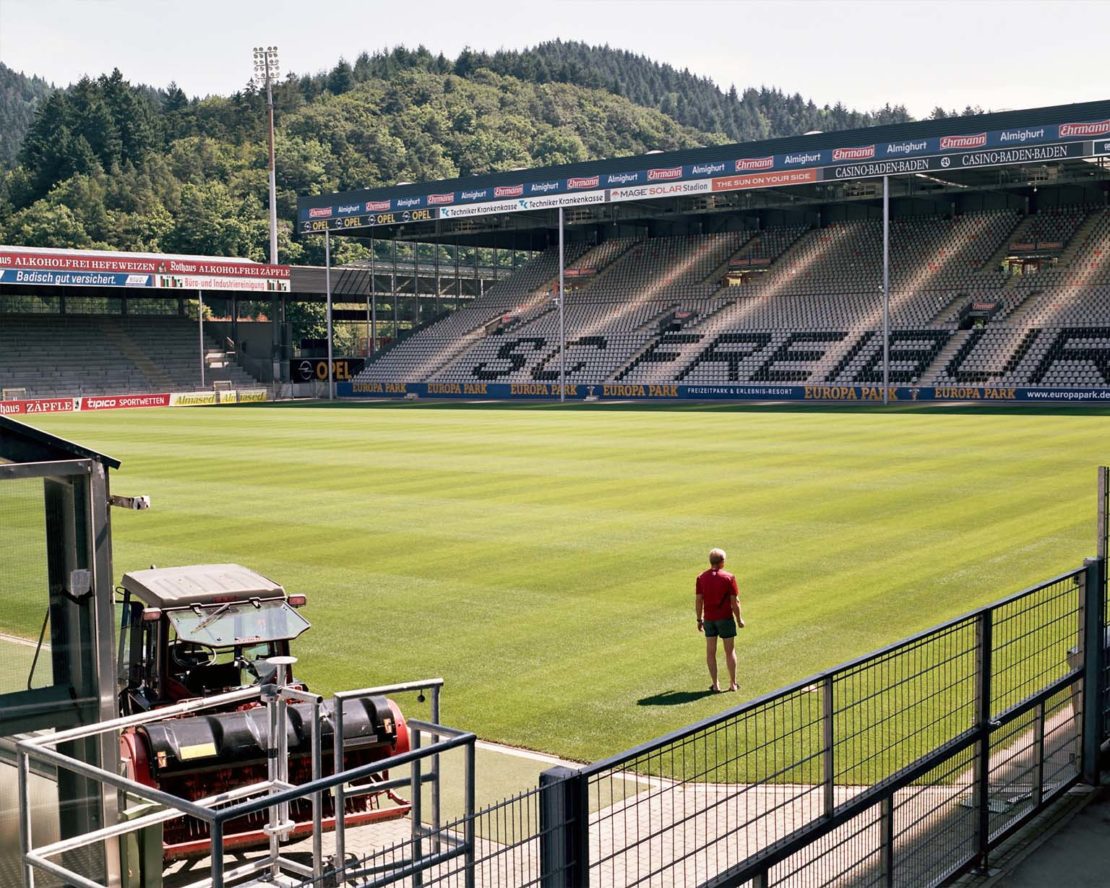
The old town looks traditional, pretty. For all its progressive credentials I wonder if there are more misty eyes in Freiburg than the city lets on. The RAF’s merciless bombing spree in World War II didn’t result in the planners trying total rebuilding projects. There are a couple of Frankfurt-style brutalist civic buildings, but – rather like Cologne – Freiburg opted to rebuild historic shops and houses. Much of the old town is a weird carbon copy of what was there before the bombing. Other relics remain: Freiburg’s famous ditches run all the way through town carrying open streams. An early example of Freiburg’s innovation, these were for fire protection in the middle ages. Innovation with water supplies also extends to a ‘friendly toilet’ scheme. Restaurants and shops allow anyone in to use their toilets; a civilised practice which encourages people to treat the facilities well.
Cinema-going is among the highest per head of anywhere in Germany and three art-house cinemas sit in Freiburg’s heart. Ludwig Ammann, who works for all three, says, “We are lucky because Freiburg’s 200,000 inhabitants all love art-house films. This discerning audience has been cultivated over more than three decades by Michael Wiedemann who was in charge of two screens in the 1980s and returned in 1998 to buy Friedrichsbau, which is one of the oldest movie theatres in Germany, dating back to 1911.”
Ammann says Wiedemann, “constantly innovated, reaching out for new audiences. He programmed a lot of documentaries on environmental causes and invented ‘pay after’ nights – surprise previews where you only pay after seeing the movie and only as much as you think it was worth.
From another green hotel in central Freiburg, The Victoria, I take the bus to the Keidel Spa, a woodland spa complex on the western fringes of the city. It seems like, in a green city, Freiburgers like nothing better than getting back to nature on a Saturday afternoon. Here, wooden buildings nestle in amongst trees, surrounded by indoor and outdoor pools. The spa itself was a happy accident resulting from a spring being discovered during the building of a road.
Everyone at the spa looks very well-to-do, even by German standards, reflecting a middle-class city with an economy based on a mix of wine-growing, retailing, financial services, tourism and hi-tech manufacturing. As at Keidel, Freiburg is surrounded by emerald woodland and encased by trees. I wonder if there’s something in that – being close to nature makes you keen to conserve nature. Forests similarly surround other eco cities such as Portland and Stockholm. Their residents also care deeply about the planet.
It was these gentle forests and rolling hills that were threatened by the construction of that nuclear power station in the 70s. And today, it’s these forests and hills that nurture the alternative – windmills that generate Freiburg’s electricity. On the bus back to town I see a crop of windmills appear above the city, their lights blinking in unison at sunset. It’s an impressive sight. Solar energy is the other method of generating power – hence the Solar Stadion, which runs on the sun and generates 250,000 kWh per year. There are panels on top of almost everyone’s house and on Freiburg’s industrial estates, factories manufacture solar panels. The Fraunhofer Institute for Solar Energy Systems has grown from 60 to 1,300 staff, working tirelessly towards making solar panels more efficient. It’s the second largest solar research institute in the world and the solar panel factories are a direct result of its work.
In a way, what really binds the enterprising people of this city is not green issues but the constant search for solutions to modern problems. Dr Susanne Wienecke is on the Green City team at Freiburg’s City Council. She outlines its ideals: “We strive for a sustainable and smart city, where houses are renovated to passive house standards, where environmental education is part of everyday life, where people prefer to walk, to ride a bike or to take public transport rather than driving a car and where green spaces are protected.” To make a city like this, you need this cooperation and, as Luciano Ibarra says, “You need to share a collective vision.”
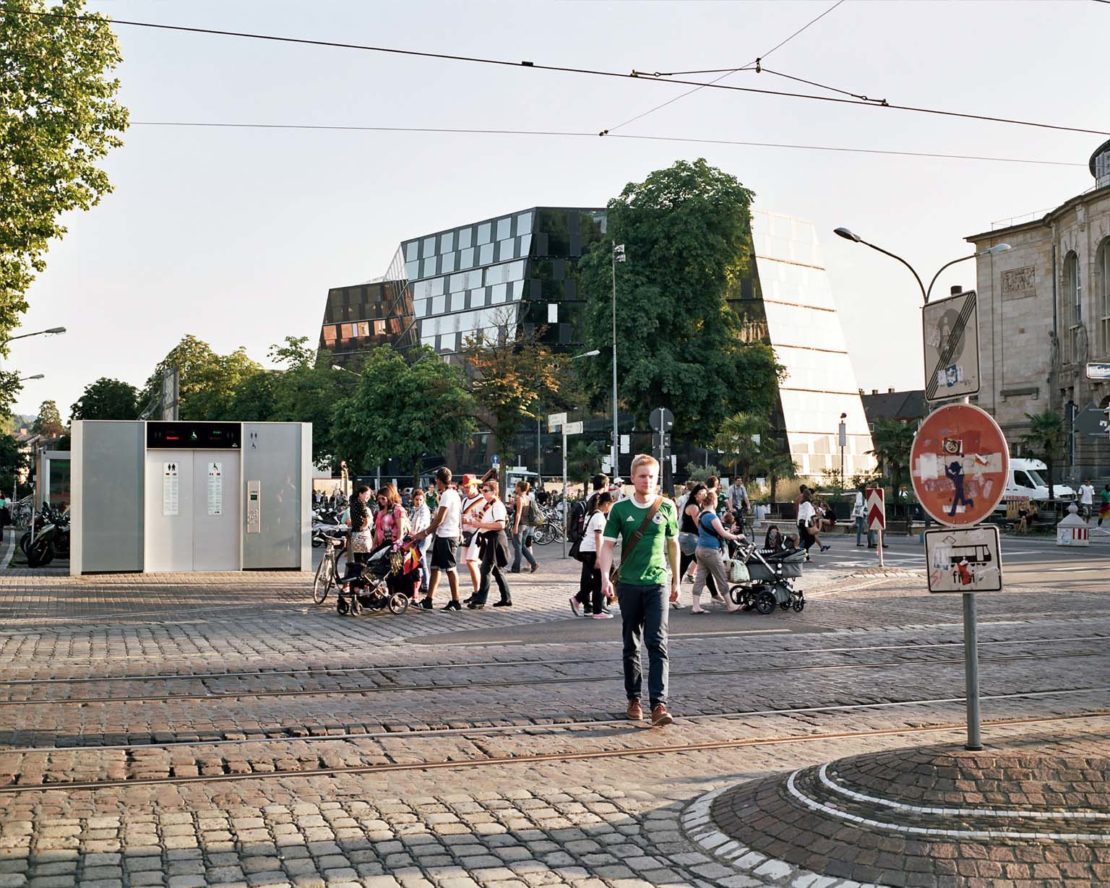
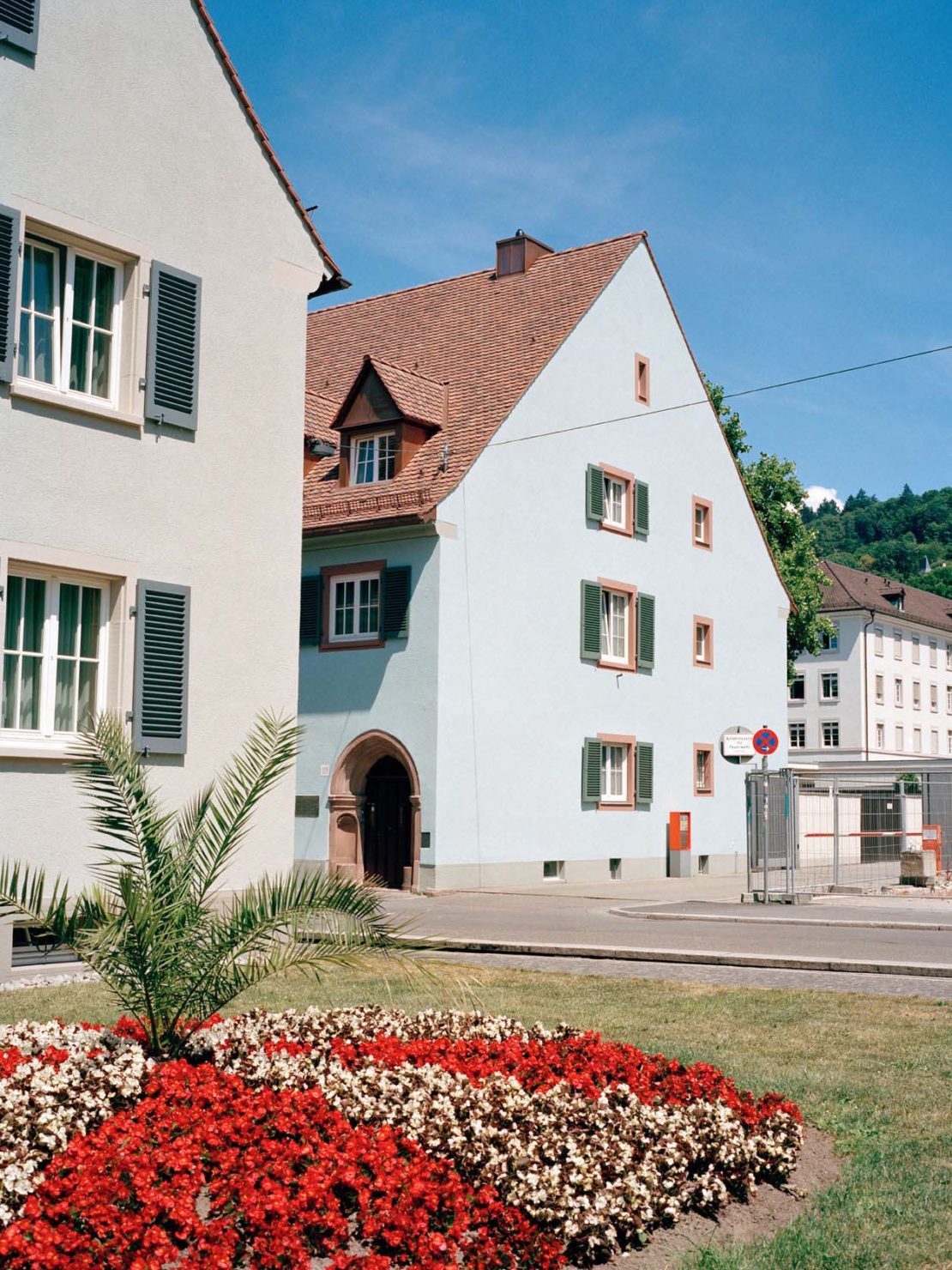
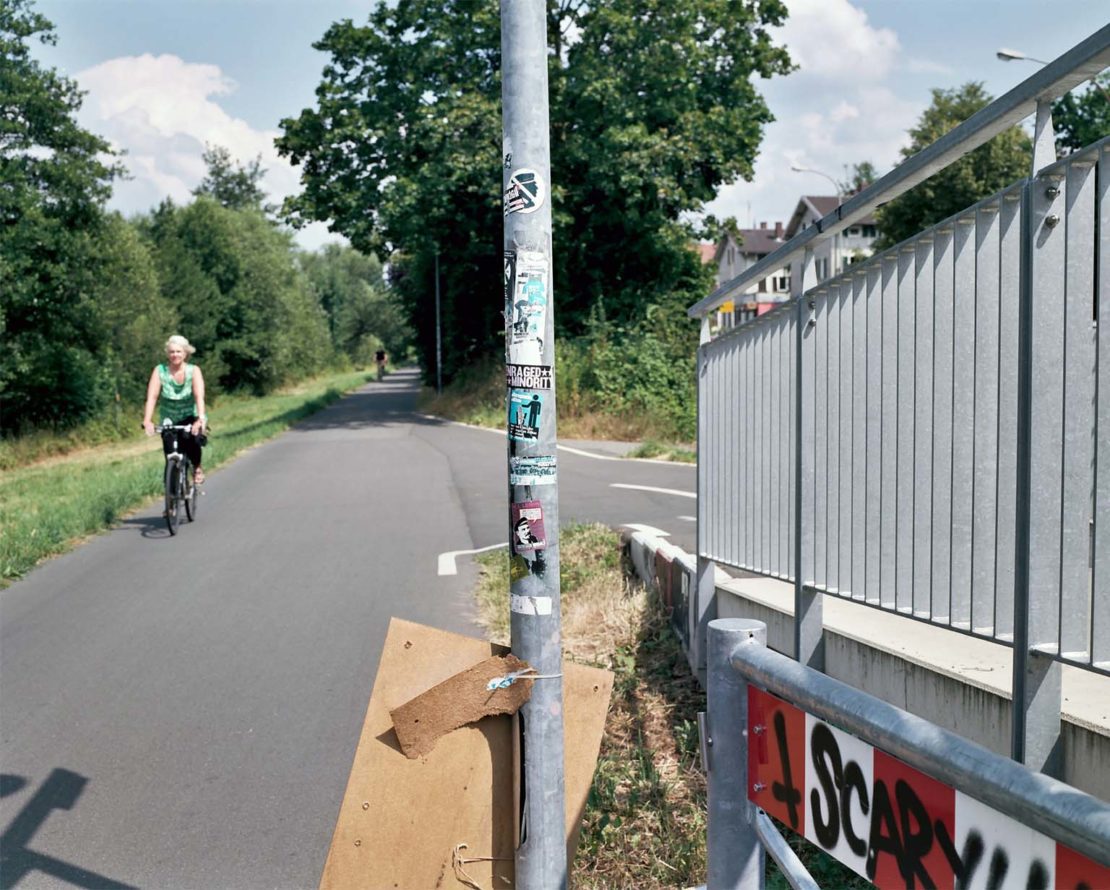
Central Freiburg and the old city
Freiburg is similar in size to Milton Keynes. The city needs 1,000m kWh per year of energy and generates 3.7 per cent of this locally from renewable sources. Freiburg has reduced its annual waste disposal from a high of 140,000 tons in 1988 to 50,000 tons today.
Freiburg’s transformation involved so many things happening together – some happy accidents, really. The culture of eco-innovation, an openness to mavericks, a bit of rural Catholic conservatism, the university and its scientific research, the private sector, and finally the city council providing land and pushing progressive policies. Crucially, once the experiment could be seen to be working, suddenly everyone got on board. It took mavericks like Rolf Disch and Wulf Daseking to start the change. Institutions – state institutions notably – only climb aboard much later when the risks are fewer. Today, the Green City team work with architects like Meinhard Hansen to build passive houses and make the visions a reality.
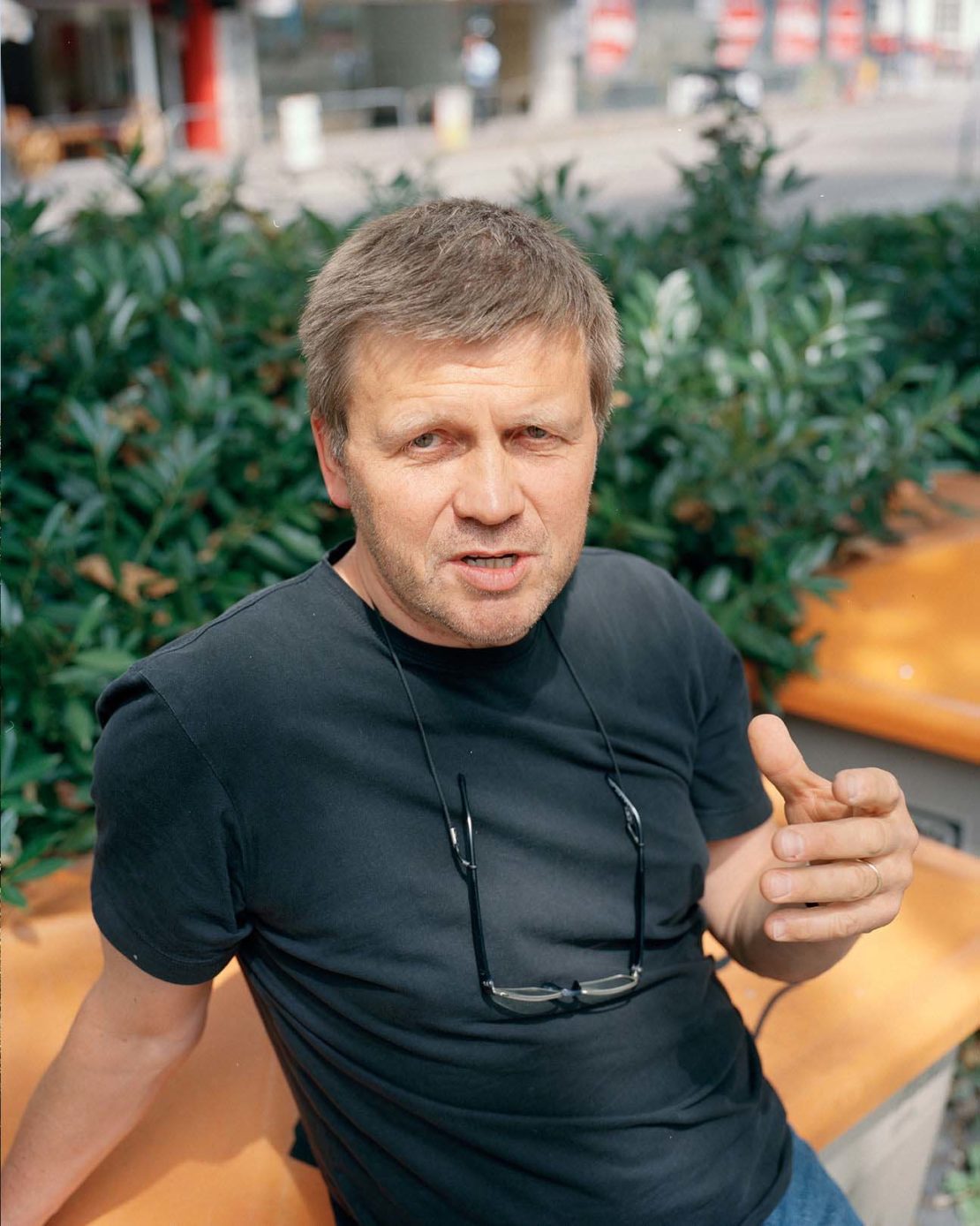
Sometimes greenness can seem like a monomania in Freiburg. I’m intrigued to know about other ideas percolating through the city. Martin Jost tells me about a project that Badische Zeitung pioneered – a news and views website called fudder.de. I track down editor Markus Hoffman to find out more about how the local media responds to such a clever and knowing young Freiburg audience. “We are one of the very few newspaper platforms addressing a large user base of digital natives younger than 35, a target group newspapers typically have lost,” he explains. “The concept is simple: local news, bloggers, community. We offered Facebook-like social network functions years before Facebook entered the German market.” What can you find on the site? “Most of the content is original, produced by young journalists gaining their first experience. Most of the stuff is local, in a Vice-like, in-your-face style.”
In the streets on Sunday afternoon before I leave town everyone seems cheerful enough, enjoying the sun and shopping for organic groceries. But what is it like to live in Freiburg? “Very, very pleasant!” says Astrid Mayer, breezily. “Freiburg is a growing city. Lots of people want to live here,” says planner Wulf Daseking. “The high-quality life, culture, lots of sunshine, education, working possibilities and good healthcare.” For Susanne Wienecke, “To live in Freiburg is fun but also a statement, because citizens follow a sustainable lifestyle and share a common view for a healthy future.” According to journalist Martin Jost, “Freiburg stands out for the generally green standard of living and the amount of people who sport an ‘alternative’, health-conscious and organic lifestyle. But within this alternative-lifestyle mainstream there is a certain amount of conformity. It’s a certain kind of passive aggressiveness with which people pressure you to conform to being different.” He adds: “Is that paradoxical enough?”
Certainly in Vauban there is a different state of mind, perhaps a requirement to conform on some level. But in many other parts of the city you would perhaps be hard pressed to differentiate it from other, similar German cities, because they almost all have good public transport, eco policies, a mix of hyper-new and old buildings, a respect for science and technology and yet a sympathy for tradition. Parts of Freiburg look like parts of Cologne, Berlin, Munich and Hamburg. There's no feeling of dryness or deadness in Freiburg, even in its experimental zones like Rieselfeld and Vauban. For its size, and despite its traditions, Freiburg is dynamic – perhaps more dynamic than any other small European city of the same size. It's a model for the future; it markets itself as such. “Despite being a conservative, Catholic city, it is really open-minded,” says editor Markus Hoffman. “Quality, sustainability and ecology are fundamental ideas - regarding food, architecture, technology or even football. Freiburg is proud of going its own way.”